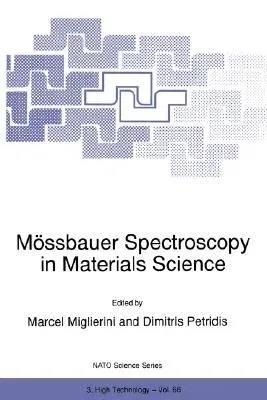Mössbauer Spectroscopy in Materials Science (Softcover Reprint of the Original 1st 1999)Paperback - Softcover Reprint of the Original 1st 1999, 28 February 1999

Qty
1
Turbo
Ships in 2 - 3 days
In Stock
Free Delivery
Cash on Delivery
15 Days
Free Returns
Secure Checkout
Part of Series
NATO Science Partnership Subseries: 3
Part of Series
NATO Science Partnership Sub-Series 3: High Technology
Part of Series
NATO Science Partnership Sub-Series: 3:
Print Length
432 pages
Language
English
Publisher
Springer
Date Published
28 Feb 1999
ISBN-10
0792356411
ISBN-13
9780792356417
Description
Product Details
Book Edition:
Softcover Reprint of the Original 1st 1999
Book Format:
Paperback
Country of Origin:
US
Date Published:
28 February 1999
Dimensions:
23.39 x
15.6 x
2.29 cm
ISBN-10:
0792356411
ISBN-13:
9780792356417
Language:
English
Location:
Dordrecht
Pages:
432
Publisher:
Series:
Weight:
616.89 gm

